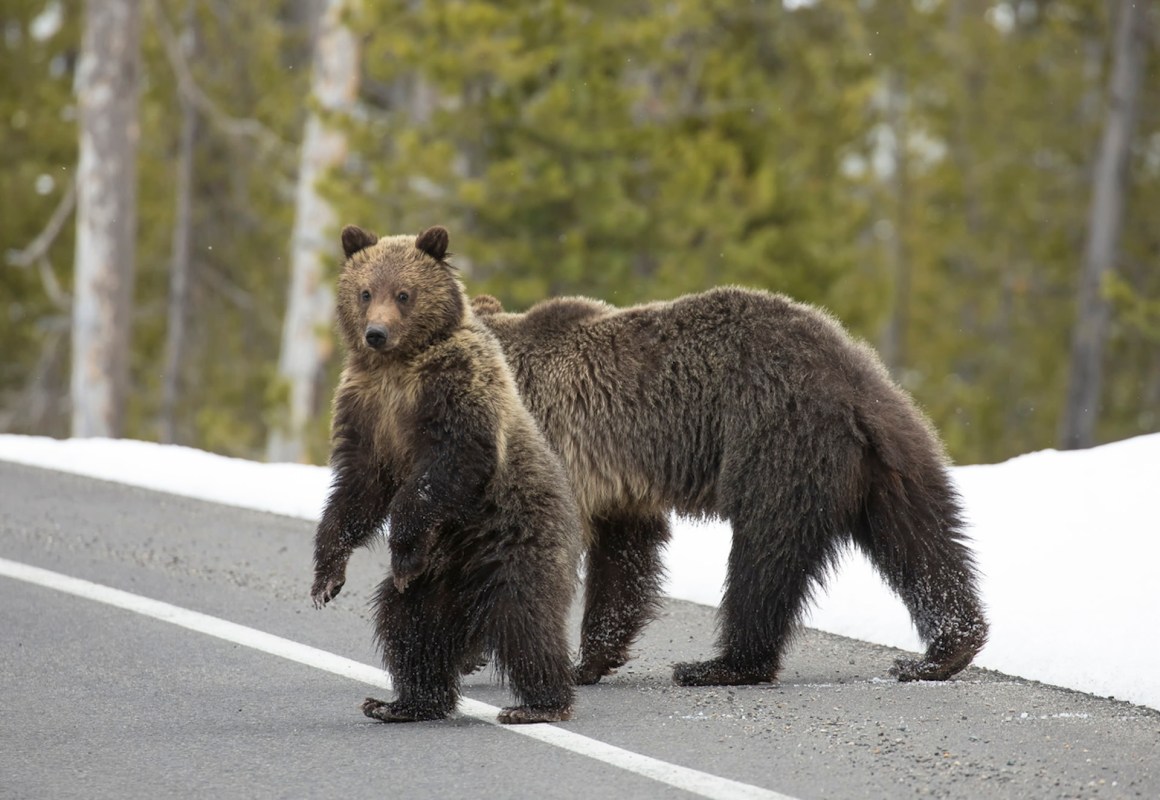In an effort to protect critically endangered grizzly bears, two wildlife conservation groups are hoping to railroad a lawsuit through the courts — literally.
As reported by ABC News, WildEarth Guardians and the Western Environmental Law Center recently filed a lawsuit in federal court in Missoula, Montana, against BNSF Railway over its failure to establish a plan to reduce the number of grizzly bears killed by trains in northwestern Montana and northern Idaho.
What's happening?
Grizzly bears are designated as a threatened species and are federally protected in the lower 48 states. The groups claim that BNSF and other railroads that use the operator's tracks have been killing the bears without an incidental take permit since 2004, when the railroad first attempted to obtain one but has yet to complete.
The permit — which is part of an ongoing effort to reduce grizzly bear deaths and is required under the U.S. Endangered Species Act — is "sought when a non-federal entity believes their otherwise lawful activities may result in take of endangered or threatened animal species," as stated by the U.S Fish & Wildlife Service.
"We are extremely disappointed that, after all these years, BNSF has refused to change its business practices to prevent the unnecessary deaths of Montana's iconic grizzlies, resulting in the tragic deaths of three bears just this fall," Sarah McMillan, Wildlife and Wildlands Program director at the Western Environmental Law Center in Missoula, told ABC News.
"When a company chooses to operate in the epicenter of key habitat for a threatened species," she continued, "it must take some responsibility to adapt practices to minimize its impacts on these animals."
Why is the delay concerning?
With global temperatures rising, bears are being driven closer to populated areas — as has already been seen in the western Canadian Arctic — increasing the chance of human encounters.
Railroads aside, grizzlies in the disputed area and elsewhere already face numerous threats from humans. Authorities in Colorado recently had to euthanize a sick bear and found its cause of death was a stomach full of plastic and other human waste.
Further, BNSF's tracks run through the Northern Continental Divide Ecosystem and the Cabinet-Yaak Ecosystem in northwestern Montana and northern Idaho. The former includes Glacier National Park and the Bob Marshall Wilderness, and both ecosystems are grizzly bear recovery areas, with an estimated combined population of more than 1,000 bears, per ABC News.
Glacier National Park is a popular tourist area where visitors often encounter bears, and sadly, aggressive behavior on the bear's part, whether provoked in any way or not, can lead to euthanization.
TCD Picks » Quince Spotlight

What is being done to avoid grizzly deaths?
According to ABC News, BNSF spokesperson Lena Kent said in an email that the railway has adopted many requirements proposed in a habitat conservation plan, including removing spilled grain and dead animals from the tracks, reducing plant life that might catch the eye of grizzlies, and providing educational programs.
There is also $1 million allocated to respond to new information on the causes of grizzly bear deaths and any new technology that could help reduce them.
Join our free newsletter for cool news and actionable info that makes it easy to help yourself while helping the planet.













